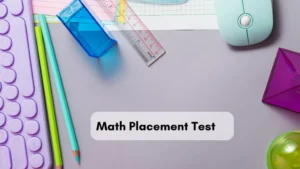The American Bar Association (ABA) research shows that 17.3% of students drop out of law school because of the demanding nature of their schedule. Prior knowledge of future attorneys exam can mentally prepare students for the expectations of law school. In this post, our law exam experts explain the various exams administered in all law schools, from highly competitive institutions like Harvard to average schools. If you need assistance in preparing and doing the exam (if proctored or online), reach out for professional help.
Law School Admission Test (LSAT)
The LSAT is a standardized future attorneys exam used by all ABA-accredited institutions to determine applicants’ readiness for law school. It is administered by the Law School Admission Council (LSAC) in January, February, April, June, August, September, October, and November. Prospective law students can take the LSAT at a testing center or remote location through proctoring software. In terms of structure, the exam has three scored sections with multiple-choice questions, each taking approximately 35 minutes, and an unscored writing test. Here’s a breakdown of the various LSAT sections:
Reading Comprehension
The reading comprehension section has four passages, each with five to eight questions related to the content provided. Three of four are standalone passages, while the fourth has two short texts with similar information.
The content in the passages tests different topics, including subjects unrelated to law, such as humanities, social sciences, and natural sciences. Aspiring law students must be able to read and decipher the information in the text to prove they can understand the dense content used in court cases and contracts.
Analytical Reasoning
The LSAT analytical reasoning section contains a passage describing a scenario and questions related to that scenario. Students must be able to derive the truth based on rules and facts and support their reasoning using conditional statements (if/then). Attaining a solid score in this section shows that students can determine the attributes of a case, regulations, and contract terms.
Logical Reasoning
This section has shorter passages with facts or arguments and single questions that ask students to conclude, determine evidence, or identify flaws. It tests students’ ability to analyze, support, or refute arguments.
LSAT Writing Sample
Eight days before the multiple-choice test, students must complete a writing sample. It asks students to take a position in an argument and support it in writing based on facts. It’s usually unscored and taken from a remote testing environment through proctoring software.
Graduate Record Exam (GRE)
GRE is a computer-based future attorneys exam accepted by over 105 law schools countrywide as an alternative to the LSAT. It’s administered by the Educational Testing Service (EST) three times yearly to measure student readiness for MBA or graduate programs. The concepts tested in this exam are basic arithmetic, geometry, algebra, and college-level vocabulary. Also, the exam takes approximately 3 hours and 45 minutes and has three main sections. These include:
Analytical Writing
The analytical writing section of this future attorneys exam provides a general topic for exam takers to analyze. They must then respond to the opinion in a clear, organized, and well-thought-out essay. It takes around 30 minutes, and scores range from 0 to 6, with 4 being the average score.
Quantitative Reasoning
The quantitative part has questions on algebra, geometry, basic arithmetic, and data analysis. These questions test learners’ ability to solve high school math concepts and are often covered in the following formats:
- 10 quantitative comparison questions
- 13 problem-solving questions
- Four data interpretation questions
Verbal Reasoning
The verbal section tests students’ ability to examine written material, including the relationship between various parts of a sentence, such as concepts and words. It has 21 questions with different formats, and the scores range from 130 to 170. Here’s how the questions in verbal reasoning appear:
- Six sentence equivalence questions
- Seven text completion questions
- 14 comprehension reading questions
Future Attorneys State Bar Exams
The state bar exam is the final future attorneys exam students take before becoming licensed attorneys in any jurisdiction countrywide. It tests their ability to think and act like attorneys and minimum competency to practice law in a specific state.
The entire exam takes about two days, but some states can administer it in two and a half or three days. Students take the bar exam every Tuesday and Wednesday in February and July, and the exam format varies depending on candidate jurisdiction, but states are adopting the Uniform Bar Exam (UBE).
That said, the commonly tested sections in this future attorneys exam may include:
- Business Associations e.g., corporations, agencies and partnerships, and limited liability companies
- CA Evidence
- CA Professional responsibility
- Remedies
- CA community property
- Trusts
- CA civil procedure
- CA wills and succession
- MBE subjects
Passing the Future Attorneys Exam
Acing any future attorneys exam can be challenging due to the demanding schedule in law school. Students should utilize the best test-taking strategies, such as practice tests, study groups, and scheduled reading, to have the best chance of succeeding. Our law exam help experts can help students with their future attorneys exam, especially take-home or proctored exams.



